 |
LIVERMORE ROOTS TRACER VOLUME XVIII NUMBER 1 Editors: Mildred Kirkwood and Jolene Abrahams Web Editor: Vicki Renz |
 |
LIVERMORE ROOTS TRACER VOLUME XVIII NUMBER 1 Editors: Mildred Kirkwood and Jolene Abrahams Web Editor: Vicki Renz |
The Roots Tracer is a quarterly publication with articles of interest to the genealogist. Members are encouraged to submit their "Profiles" as well as articles of general interest. Queries are free to members, $l.00 to non-members. The deadline for each quarterly is the 15th of June, September, December and March. Send material to: Roots Tracer, P. O. Box 901, Livermore, CA 94551-0901.
Copyright Notice: No articles may be reproduced for profit or commercial gain without the express consent of the authors, the editors, or the Livermore-Amador Genealogical Society.
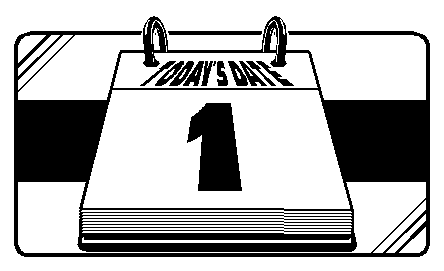 |
CALENDAR OF
SELECTED GENEALOGICAL EVENTS |
Jan 13 - LIVERMORE-AMADOR GENEALOGICAL SOCIETY (L-AGS) Regular meeting 7:30 pm. Congregation Beth Emek, corner of College Avenue & South M Street, Livermore.
Jan 15 - L-AGS STUDY GROUP meets at LDS Church, 950 Mocho Street, Livermore, 7:30 pm.
Jan 12-16 - Utah Genealogical Association - Salt Lake Institute of Genealogy, Salt Lake Plaza Hotel. Tuition for five days: $270.00. (Special room rate from the host hotel - 801-521-0130) Application deadline is 7 Oct 1997.
Jan 22 - L-AGS COMPUTER GROUP meets at Sonoma School, 543 Sonoma Avenue, Livermore, 7:30 pm.
Apr - Utah Genealogy Society presents the 1998 UGA Conference "Bring Your Ancestors to Life" to be held at the Doubletree Hotel, Salt Lake City, UT. For information, see the UGA web page: http://www.infouga.org or write UGA, PO Box 1144, Salt Lake City, UT 84110.
Feb 4 through Mar 25 - Beginning Genealogy classes. 8 week course, mornings or evenings taught by Jolene Abrahams.
Feb 5 - L-AGS Family Tree Maker Focus Group meets at Sonoma School, 543 Sonoma Avenue, Livermore, 7:30 pm.
Feb 7 - CSGA Board meeting in Riverside, CA.
Feb 10 - LIVERMORE-AMADOR GENEALOGICAL SOCIETY (L-AGS) Regular meeting 7:30 pm. Congregation Beth Emek, corner of College Avenue & South "M" Street, Livermore.
Feb 19 - L-AGS STUDY GROUP meets at LDS Church, 950 Mocho Street, Livermore, 7:30 pm.
Feb 20-22 - SOCIETY OF HISPANIC HISTORICAL & ANCESTRAL RESEARCH (SHHAR) 14th Annual Buscando Nuestras Raices Conference to be held at the Autry Museum of Western Heritage, Los Angeles. The conference will host the quarterly meetings of both the California Conference of Historical Societies & California State Genealogical Society.
Feb 26 - L-AGS COMPUTER GROUP meets at Sonoma School, 543 Sonoma Avenue, Livermore, 7:30 pm.
Feb 28 - San Mateo County Genealogical Society Seminar with George Schwitzer.
Mar 5 - L-AGS Family Tree Maker Focus Group meets at Sonoma School, 543 Sonoma Avenue, Livermore, 7:30 pm.
Mar 10 - LIVERMORE-AMADOR GENEALOGICAL SOCIETY (L-AGS) Regular meeting 7:30 pm. Congregation Beth Emek, corner of College Avenue & South "M" Street, Livermore.
Mar 19 - L-AGS STUDY GROUP meets at LDS Church, 950 Mocho Street, Livermore, 7:30 pm.
Mar 26 - L-AGS COMPUTER GROUP meets at Sonoma School, 543 Sonoma Avenue, Livermore, 7:30 pm.
Mar 27-28 - Calfornia Genealogical Society - 13th Annual Family History Fair, "A Century of Prospecting for Ancestors" to be held at the Concourse Exhibition Center & Fashion Center, 8th Street, between Townsend & Brannan Street, San Francisco.
Apr 14 - LIVERMORE-AMADOR GENEALOGICAL SOCIETY (L-AGS) Regular meeting 7:30 pm. Congregation Beth Emek, corner of College Avenue & South "M" Street, Livermore.
May 6-9 - National Genealogical Society Conference of the States in Denver, CO. Write for NGS '98 Conference Registration Brochure, 4527 17th Street North, Arlington, VA 22207-2399.
Return to the Table of Contents.
 |
FROM THE PRESIDENT David Abrahams |
During my term of office, we have nearly doubled attendance at meetings. Our programs have been outstanding. We have a great Members' Handbook. We have an outstanding Computer Users Group and Study Group, both of which are responsible for providing information not available during regular meetings, and bringing new members to L-AGS. Our annual seminars have been well received by all attendees. And we celebrated the 20th Anniversary of L-AGS with a wonderful picnic and social.
Now, it is time for me to step down. Congratulations to the new Board. They will have my complete support for all their endeavors. I know L-AGS will continue to flourish. And I hope they have as much fun as I have had.
Return to the Table of Contents.
 |
L-AGS LOGO CONTEST WINNER |
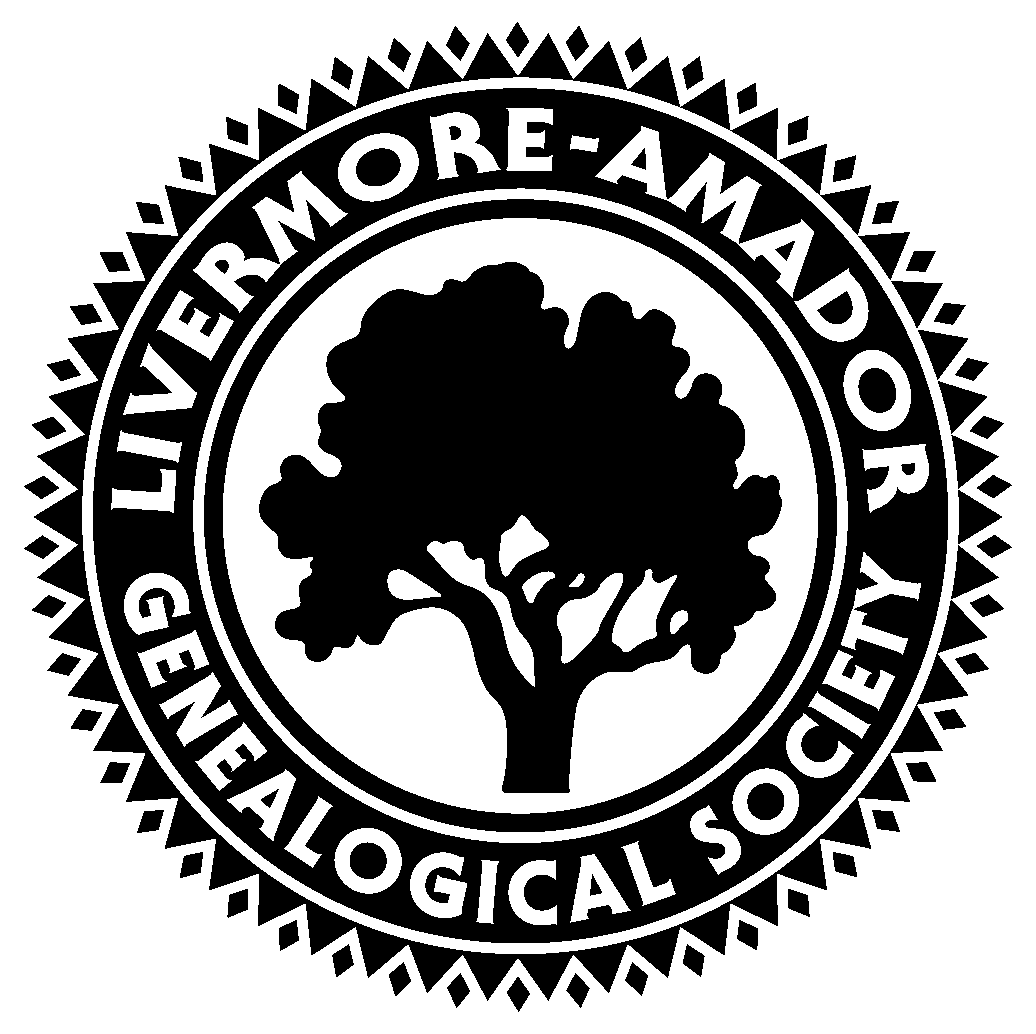 |
We would like to thank our judges, Garth Ludwig and Doug Mumma, who volunteered to judge the entries.
This digital image is already in use, gracing the cover of this edition of The Livermore Roots Tracer. A full color version of the new logo has been incorporated into the L-AGS Home Page on the Internet. Be sure to check it out.
And, we will proudly use this logo as part of the heading on new L-AGS stationery.
Return to the Table of Contents.
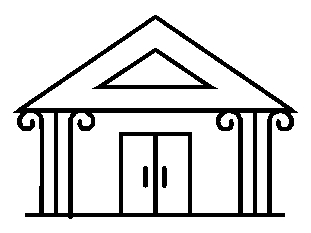 |
FAMILY HISTORY CENTER |
First, I need to express thanks to Florence Lawson for the donation of the 486 IBM computer to the Livermore LDS Family History Center on Mocho Street. Ted Rowland has done the work of buying and installing a CD drive. This expands the available resources of the library by making usable CDs that were too slow on the 386 machine.
There are several CDs available at the FHC. They include the Illinois State Genealogy Society index of Illinois Marriages to 1901. This is complete for 41 counties and includes marriages for 82 counties.
The following Family Tree Maker CDs are also available:
The 1860 AIS census index (about eight states are not included)
Disk 2 for marriages in IL, IN, KY, OH, TN
Disk 228 for marriages in IL and IN
Their version of the Social Security Death Index
Their Index CDs
World Family Tree Disks 1-5.
There are two CDs on LDS records and writings of early pioneers. There is also a street atlas and a phone directory - items already available to Internet users.
The hours of the Livermore Family History Center are:
Return to the Table of Contents.
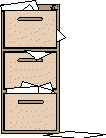 |
THINGS TO FILE by Jolene Abrahams |
Headstones vs. Shaving Cream A number of articles have appeared recently in genealogical journals which suggested using shaving cream to improve your ability to read and/or photograph gravestones. According to David Chapin, a genealogist on the Internet, this is a bad idea. Apparently, the main ingredient is stearic acid. The pH of typical shaving cream is in 5 range, which makes it more acidic than acid rain! By the time the next rain comes and washes it away, the reaction is complete and the damage is already done. Chapin says not to use blackboard chalk, either, because it contains gypsum. Gypsum can convert to acid under some weathering conditions. Don't use soil either, because it can sometimes be highly acidic. So what to do now? Chapin suggests using only inert or neutral materials to enhance your photos, such as talc or powdered limestone. Crushed TUMS may work.
From: CSGA Newsletter, Vol. 14, #4Stuck Photos Here’s a hint to remove a stuck snapshot from a magnetic photo album. Aim a blast of hot air from a hairdryer under the photo. Usually, you can at least lift a corner.
From: The Family Tree, Jan/Feb 1996 Tips you should forget about Several genealogical newsletters have published the old tip about using Glad Bags to store your papers and photos...but this just isn't a good idea. The nice folks at Glad Bag wrote to the "Family Tree" and advised Glad Bags are NOT mylar and NOT archival. While the company was delighted with the prospect of a potential new use, it did not want to mislead anyone. From: SCGS Root Digger, Nov. 1995Beware Look out for forged obituaries. Recently there was an advertisement offering "original looking obituaries." The advertisement said that for $5 you would receive the obituary ("... send all information wanted in the obituary"). An article on this situation is in the NGS Newsletter Sept 1996.
From: The Family TreeWitnesses Have you ever gotten stuck in your genealogy research? Before you conclude you have no clues to follow, go back to all your source documents. Record ALL people mentioned. For example: The ministers, bondsman, and witnesses on marriages and wills; chain carriers, land surveyors and neighbors on land transactions; and godparents on baptisms. You never know when and where these people will appear again in your research. Some genealogy programs have a box labeled "Witnesses." Don't let the fact that they are called 'witnesses' "box in" your thinking! Witnesses can be any role that a person plays in the event being recorded.
Excerpt from "Witnesses and the Roles They Play" by Jeri Steele, NGS/CIG Digest, Jul/Aug '96What is the status of your birth record? Genealogists are so busy getting birth certificates for their ancestors that they forget about their own. It is a good idea to have a copy in a convenient location. If you can't, it could take weeks to order another one. Always store the original in a safe deposit box or a fire-proof safe. It is just as important to have a copy of your Social Security Card and also storing the original with your birth certificate. In California, in order to get a duplicate drivers license you have to have your Social Security Card, not just knowing the number. When you go to the Social Security Office to get a new card, they won't re-issue you one without a pictured identification even if you know your DMV number and your Social Security number. The Social Security Administration will accept a birth certificate as your identification. This situation can actually happen if a purse or wallet is stolen.
Source unknownWeb Ware Internet Fraud! Many hustlers don't sell anything, but they want enough information about you to take your money. By POSING as Internet access providers or merchants doing business on the Net, some send e-mail messages seeking your credit card, bank account or Social Security numbers and make requests such as, "We need your Social Security number for registration."
From: CSGA Newsletter, Vol. 14, #9,Sept 1996Return to the Table of Contents.
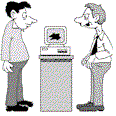 |
COMPUTER
NEWS Doug Mumma |
COMPUTER INTEREST GROUP MEETING SCHEDULE
I would like to thank everyone for submitting their ballots for the meeting topics for 1998. From these results, the topics for the first four or five months have been established. The top four subjects are:
GEDCOM Files and Utilities
Scanning and Image Handling
Create your own Genealogy Web Page
Effective Surfing of the Internet
Later in the year we will have meetings about newsgroups and mailing lists, discuss E-mail, wall charts, compare various genealogy programs, discuss desk top publishing, and demonstrate utility programs. We have more topics than available meeting sessions, so it should be a busy and informative year.
Please note that the meeting location has been changed. We will now meet at the old Sonoma Elementary School located at 543 Sonoma Avenue in Livermore, which is operated by the Livermore Adult Education. The class will be held in room 7/8 at 7:30 p.m. The advantages of using this new site is the availability of a computer screen projection system that allows everyone in the room to easily view the computer screen image. We also will be able to access the Internet, allowing good demonstrations of online techniques and Web sites. A map showing directions to the school site can be viewed on the Internet at http://www.l-ags.org/sonoma.html.
Meeting - January 22, 1998 - "GEDCOM Files and Utilities" This meeting will explore what a GEDCOM file is, how to create one, and how to manipulate the data they contain with special viewer programs or your word processor program. This session will be especially useful if you either send or receive GEDCOM files by snail mail or E-mail from friends or relatives. If you have a troublesome file, bring it with you and we will view and discuss it.
Meeting - February 26, 1998 - "Scanning and Image Handling" This always seems to be a popular topic. I'm sure that many of us have recently received scanners for Christmas or have simply treated ourselves to this great tool. We will explore the best settings to use depending on whether you are scanning a document to convert to revisable text, scanning photographs to use on the Internet, want to include images in your genealogy program, or you simply want to print out high quality copies on your printer. We will also discuss how to enhance an image after it has been scanned in order to remove defects or lighten/darken an image.
Meeting - March 26, 1998 - "Effective Surfing of the Internet" Surfing the Internet is a very popular way to enhance your genealogy research. We will focus on effective ways to quickly find topics of interest and mark the place so you can return another day. Since many of us would like to exchange data or GEDCOM files with other researchers, we will show hands-on techniques for attaching files to E-mail messages as well as figuring what to do with a file after one has been received. Other features of the popular browsers will be discussed.
Meeting - April 23, 1998 - "Create your own Genealogy Web Page" Two Sessions The basic fundamentals of the HTML language used to create Web pages will be discussed. Several Web editing and creation programs (MSWord, AOL's AOLPress, FrontPage) will be discussed or demonstrated along with special utilities in Family Origins and Family Tree Maker to create Web genealogies. A homework assignment will be to make your own Web page and bring it back to the next session on diskette.
The second session will review any problems that people had creating Web page files. Then various techniques to move your Web pages from your computer to your ISP's site will be addressed. For those people whose ISP's don't provide file space for Web sites, we will upload your file to the L-AGS web site.FAMILY TREE MAKER FOCUS GROUP MEETINGS
Since we have a number of new members, it is appropriate to reiterate that users of Family Tree Maker meet on the 1st Thursday of each month. The purpose of the meetings is to discuss ways to use this popular genealogy software more effectively and to solve particular problems that the attendees may be having. This group also meets at the Sonoma Avenue School in Livermore at 7:30 p.m. in the portable trailer, P2, located directly behind the school.
LIVERMORE ADULT EDUCATION CLASSES
The Livermore Adult Education recently issued the winter class schedule and there may be some computer and Internet classes of interest to you. These classes are more extensive than we can offer through the Computer Interest Group meetings. Most Livermore residents receive a class schedule in the mail; however, out of town folks can obtain a copy by calling 606-4722 or by stopping by the Adult Education office at 543 Sonoma Avenue. Below is a partial listing of the class topics:
|
A course designed for someone without a computer |
|
An introductory class for the novice PC user |
|
An introductory class for the novice Mac user |
|
An introductory class discussing the basic functions and ways to customize |
|
Beginning, intermediate, and advanced classes in Web page design |
|
Cover the basics of the Internet, including browsers and e-mail |
|
Beginning and intermediate classes for this powerful word processor |
FREQUENTLY ASKED QUESTIONS (FAQ's) ABOUT THE INTERNET
I had a surprise the other day when I opened Pacific Bell's Tri-Valley telephone directory. In the middle of the Yellow Pages, under the topic of INTERNET, there were ten pages of general information about the Internet that were quite good. The first page was filled with "Frequently Asked Questions" which answer such questions as "What does URL mean?" or "What is an Internet Service Provider?" The answers are succinct and understandable for new or experienced Internet users alike. Then followed several pages of useful Web sites that related to the local area as well as specific topics. The balance of the pages are typical Yellow Page advertising for Internet related services. This is a resource worth looking at.
DICK EASTMAN'S WEEKLY GENEALOGY MAGAZINE
There are a number of fun and interesting Web sites that you can visit. I would like to again recommend "subscribing" to Dick Eastman's Weekly Genealogy Magazine on the Internet. If you subscribe, it will be delivered as an e-mail message to your computer each Friday evening so you can read it at your leisure. He always has good current topics that are interesting and useful. He also highlights some new web sites each week that might be of interest to you. If you don't like a particular issue, it only takes a few seconds to delete it or you can simply "unsubscribe" to the magazine. For more detailed information, go to http://www.ancestry.com/home/eastarch.htm.
In the December 8th issue, he has an article (you can look at past issues when you go to the site listed above) in which he discusses Spam, which many of us receive daily. Some of you may ask, "What is Spam?" Well, years ago I would have answered that it was a processed meat that you ate, but in today's world, it is just "unsolicited advertising messages" you receive by e-mail. Those are not only becoming annoying, but many of them advertise pornographic web sites. I, for one, don't want that type of advertising flaunted in my grandchildren's faces (or your children's faces as the case might be). This article is worth reading to understand the issues a little better as he explains how you might get on a spam mailing list. I will do a follow-up article about pornography on the Internet and how to control it on your machine.
Return to the Table of Contents.
 |
DO YOU HAVE A COUSIN IN L-AGS? by George Anderson |
We get inquiries from all over the world from people who read the surname postings on the L-AGS Web page. Some members (I included) have matched up with previously unknown relatives through our Web site. But did you know that there are more than 70 potential matches right within our own club? Maybe the person sitting next to you in a L-AGS meeting is a long-sought cousin. Maybe he or she has the solution to your most vexing genealogical puzzle.
I searched through our surname postings to find members who were looking for the same surname in the same place as another member. The first list below gives the names of the members who have such matching interests. The numbers following the names refer to the second list, in which the two matching postings are given.
| Alexander - 13, 26, 41 | Kirkwood - 58 | Reynolds, J. - 40 |
| Anderson - 12, 63 | Larosa - 56 | Robinson - 2, 3, 4, 10, 22, 25, 32, 40, 42, 43, 48 |
| Barber - 15 | Lindsey - 29, 36, 53 | Samans - 17 |
| Barnes - 5, 16, 67, 68 | Ludwig - 11, 27, 31, 33, 44, 52, 67 | Schuyler - 33 |
| Barr - 5, 18, 27, 30, 31, 34, 38, 44, 45, 47, 52, 57, 60, 64, 65 | Martz - 7 | Scofield - 9, 48 |
| Bevard - 56 | McFarlane - 20 | Shirley - 8, 51 |
| Bradley - 24 | McMills - 18, 38, 45, 60, 64, 65 | Stroud - 2, 3, 4, 10, 22, 25, 32, 42, 43 |
| Camozzi - 7 | Moore - 49 | Sunseri - 35 |
| Curry - 54, 55 | Musser - 19, 39 | Terry - 21 |
| Elm - 6, 24 | Norman - 34 | Thompson - 8, 19, 20, 55, 66 |
| Farrand, E. - 37 | Norris - 14 | Tucker - 49, 56 |
| Farrand, W. - 23 | Overturf - 50 | Viano - 58 |
| Fisher - 12, 15, 17, 28, 29, 30, 31, 36, 37, 39, 46, 50, 51, 61, 69 | Pitt - 13 | Vierra - 57 |
| Fleckner - 69 | Pomykal - 66 | Ware - 62 |
| Homan - 9, 14 | Pyle - 59 | Wensel - 23 |
| Houlding - 53, 54 | Renslow, D. - 28, 62 | Whisman, D. - 1 |
| King - 21, 59, 61, 70 | Renz - 1, 12, 46 | Young - 6, 26, 41, 63, 70 |
1. Alden, MA, 1620, Renz 1. Alden, MA, 1620-1640, Whisman, D. |
36. Mills, NC, , Fisher 36. Mills, NC, 1780, Lindsey |
| 2. Backus, CT Middlesex Co, c1640-c1655, Robinson 2. Backus, CT Middlesex Co, c1664, Stroud |
37. Moore, PA, 1734, Farrand. E. 37. Moore, PA, 1797, Fisher |
| 3. Backus, CT New Haven Co, c1636-c1640, Robinson 3. Backus, CT New Haven Co., c1655, Stroud |
38. Myers, , 1871-1921, Barr 38. Myers, , , McMills |
| 4. Backus, CT New London Co., c1655-c1700, Robinson 4. Backus, CT New London Co., 1663-1681, Stroud |
39. Pence, IN, 1960-1975, Fisher 39. Pence, IN, 1780-1850, Musser |
| 5. Barnes, , c1650-1992, Barnes 5. Barnes, , , Barr |
40. Perkins, MA Essex Co., 1748-1774, Reynolds, J. 40. Perkins, MA Essex Co., c1636-1725, Robinson |
| 6. Beall, MD, 1700, Elm 6. Beall, MD, 1625-1717, Young |
41. Phillips, ENG, , Alexander 41. Phillips, ENG, c1620-1635, Young |
| 7. Brown, CA Alameda Co., 1850-1920, Camozzi 7. Brown, CA Alameda Co., 1901, Martz |
42. Porter, CT Hartford Co., c1640-1688, Robinson 42. Porter, CT Hartford Co., 1685-1728, Stroud |
| 8. Buchanan, PA, 1750-1829, Shirley 8. Buchanan, PA, 1850-, Thompson |
43. Pratt, CT Middlesex Co., c1640-1662, Robinson 43. Pratt, CT Middlesex Co., c1664, Stroud |
| 9. Bullard, MA Middlesex Co., 1750-1850, Homan 9. Bullard, MA Middlesex Co., 1770-1790, Scofield |
44. Roberts, , 1864-1986, Barr 44. Roberts, , , Ludwig |
| 10. Charles, CT New Haven Co., c1617-, Robinson 10. Charles, CT New Haven Co., c1655, Stroud |
45. Ruff, , 1961-1988, Barr 45. Ruff, , , McMills |
| 11. Clark, , 1651-1803, Barnes 11. Clark, , , Ludwig |
46. Scroggs, PA, 1836, Fisher 46. Scroggs, PA, 1814, Renz |
| 12. Dawson, PA, 1720-1839, Anderson 12. Dawson, PA, 1783-1836, Fisher 12. Dawson, PA, 1817, Renz |
47. Searle, , 1631-c1780, Barnes 47. Searle, , , Barr |
| 13. Dixon, OH, 1800-1950, Pitt 13. Dixon, OH, , Alexander |
48. Sheldon, MA Hampshire Co., 1656-1712, Robinson 48. Sheldon, MA Hampshire Co., 1700-1720, Scofield |
| 14. Drury, ENG London, 1750-1880, Homan 14. Drury, ENG London, 1616, Norris |
49. Smith, ENG, 1627, Barnes 49. Smith, ENG, 1800-1850, Moore 49. Smith, ENG, 1790-1894, Tucker |
| 15. Durham, VA Richmond Co., 1686, Barber 15. Durham, VA Richmond Co., 1738, Fisher |
50. Smith, SC, 1915, Fisher 50. Smith, SC, 1810-1820, Overturf |
| 16. Edwards, ENG, c1636, Barnes 16. Edwards, ENG, 1800-1900, Pitt |
51. Stewart, PA, 1849, Fisher 51. Stewart, PA, 1800-1860, Shirley |
| 17. Edwards, IL, 1898, Fisher 17. Edwards, IL, 1700-1850, Samans |
52. Thompson, , 1912-1950, Barr 52. Thompson, , , Ludwig |
| 18. Ellis, , 1963-, Barr 18. Ellis, , 1992, McMills |
53. Thompson, ENG, c1760, Houlding 53. Thompson, ENG, -1600, Lindsey |
| 19. Ferguson, IL, 1800-pres, Musser 19. Ferguson, IL, 1860-, Thompson |
54. Thompson, KY, 1800s, Curry 54. Thompson, KY, 1740-1872, Houlding |
| 20. Ferguson, SCT, 1750-1940, McFarlane 20. Ferguson, SCT, 1860-, Thompson |
55. Thompson, OH, 1800s, Curry 55. Thompson, OH, 1700-, Thompson |
| 21. Ferguson, VA, 1770, Terry 21. Ferguson, VA, 1600s-1700s, King |
56. Tucker, NC, 1780-1813, Bevard 56. Tucker, NC, -1840, Larosa 56. Tucker, NC, -1912, Tucker |
| 22. Fuller, MA Plymouth Co., 1620-c1680, Robinson 22. Fuller, MA Plymouth Co., c1624-1790, Stroud |
57. Turner, , 1889-1916, Barr 57. Turner, , 1767-, Vierra |
| 23. Hall, CT, 1650-1725, Farrand, W. 23. Hall, CT, 1640-1700, Wensel |
58. Turner, MD, 1720s, Kirkwood 58. Turner, MD, 1811-1880, Viano |
| 24. Hamilton, SCT, -1700, Bradley 24. Hamilton, SCT, 1600s, Elm |
59. Walker, VA Orange Co., 1700s, King 59. Walker, VA Orange Co., 1735-1840s, Pyle |
| 25. Hart, CT Hartford Co., -1682, Robinson 25. Hart, CT Hartford Co., 1658-1689, Stroud |
60. Wallace, , 1955-1966, Barr 60. Wallace, , c1770, McMills |
| 26. Holland, OH, , Alexander 26. Holland, OH, 1828-1848, Young |
61. Ware, VA,1785-1795, Fisher 61. Ware, VA, 1700s-1800s, King |
| 27. Johnson, , , Barr 27. Johnson, , , Ludwig |
62. Watson, VA, 1796, Renslow, D. 62. Watson, VA, 1650-1780, Ware |
| 28. Johnson, PA Philadelphia Co., 1743, Fisher 28. Johnson, PA Philadelphia Co., 1781-1815, Renslow |
63. Wells, MD Baltimore Co., 1722-1765, Anderson 63. Wells, MD Baltimore Co., 1673-1753, Young |
| 29. Jones, NC, 1775-1802, Fisher 29. Jones, NC, 1700-1790, Lindsey |
64. Willis, , 1920-1996, Barr 64. Willis, , , McMills |
| 30. Jones, VA, , Barr 30. Jones, VA, 1833-1833, Fisher |
65. Wilson, , 1978-, Barr 65. Wilson, , c1776, McMills |
| 31. Kellogg, , 1912-1940, Barr 31. Kellogg, , 1728-, Ludwig |
66. Wilson, OH, 1850, Pomykal 66. Wilson, OH, 1780-1880, Thompson |
| 32. Loomis, CT Hartford Co., c1650-1688, Robinson 32. Loomis, CT Hartford Co., 1662-1689, Stroud |
67. Wright, , 1713-1795, Barnes 67. Wright, , , Ludwig |
| 33. Ludwig, CA Alameda Co., 1966-, Ludwig 33. Ludwig, CA Alameda Co., 1868-1950, Schuyler |
68. Wright, MA Hampshire Co., 1665-1684, Barnes 68. Wright, MA Hampshire Co., 1627-1665, Robinson |
| 34. Martin, , , Barr 34. Martin, , 1800-1950, Norman |
69. Yates, MO, 1879-1908, Fisher 69. Yates, MO, 1826, Fleckner |
| 35. McCoy, KY, 1804, Fisher 35. McCoy, KY, 1800, Sunseri |
70. Young, IRL, 1700s, King 70. Young, IRL, c1714-1739, Young |
Return to the Table of Contents.
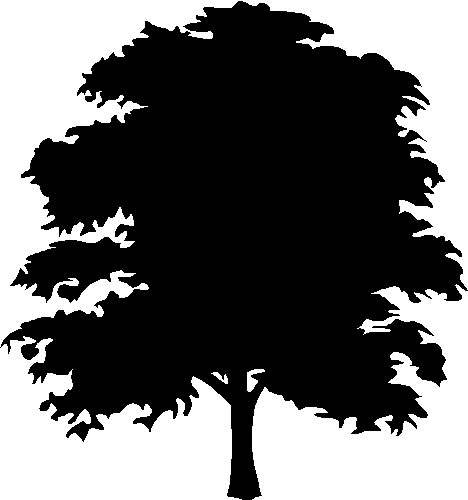 |
UNDER THE GENEALOGY TREE WITH JOLENE by Jolene Abrahams |
Copyright Protection While very few beginning genealogy students are concerned about copyright protection, the following information will help them later. However, there are some beginning genealogists who like to write history as they gather the usual information such as names, dates and places. They enjoy putting the "meat on the bones" (history to pedigree charts) as soon as possible. So this information is good now.
Anything published before 1906 is public domain. Anything published after 1978 is copyrighted for the life of the author plus fifty years. If you quote less than 400 words total from one book, you can use it without permission (it is always a good idea to get it anyway), but you must give credit to the source. You need permission for tables, charts, and figures.
From SMCGS Newsletter, 14:6, pg 109While you are writing your history you can protect it by writing "Copyright 1997 John A. Doe" at the bottom of each page. (The date should be the year when you began writing, and your name would, of course, replace "John A. Doe".) This is called "common law copyright" and will protect your work until it is printed. When it is printed, the copyright notation needs to appear on the title page only.
After you have finished writing your book and want to print it and distribute it to family and friends, you should protect it further by filing official copyright papers with the Copyright Office, Library of Congress, Washington, D.C.
If you intend to offer your book for sale, you should also register the work with the Copyright Office. The following numbers are helpful in answering your questions:
Copyright Form Hotline (202-287-9100). Use this number for ordering forms and for individual help in filling out the forms. They can answer most of your questions.
Copyright Office, Library of Congress, Washington, D.C. 20559 (202-479-8700). Use this number when you have questions concerning the copyright registration of your book.
Copyright laws and fees change from time to time. It would be wise to consult the Copyright Office for the latest information.
From WAGS Newsletter, May 1993, pg. 132, by Wanda BallardCopyright Book For those of you who want something more, I strongly suggest the book entitled "The Copyright Reference Guide: for Genealogists", by Daniel J. Hay. The cost is between $6 and $8.
Order from Advanced Resources, Inc., 144 Parrish Square, #144, Centerville, Utah 84014.
For additional reading of Copyright Information by Daniel J. Hay, read various issues of Everton's Genealogical Helper.
YOU KNOW YOU'RE AN ADDICTED GENEALOGIST
QUOTING - COPYING - COPYRIGHT - INFRINGEMENT - PLAGIARISM
There are sometimes fine lines distinguishing the above terms, and in genealogy it is easy to cross a line unintentionally. Most of us are only interested in compiling information on our own ancestors. We may not feel the need to indicate the source of all of our information. While this is perhaps quoting, perhaps copying, but definitely not plagiarism, it is also not beneficial to our own further research. We will, in the future, wonder where that information came from if another piece of information conflicts with it. The line gets crossed, however, when we want to share our compiled information with another researcher. At that time, if we have not carefully documented our sources of information, we might easily cross the line into plagiarism.
This might seem a harsh stand to take, but with the ease of electronic transmittal of data today, the works of many people are continually being transmitted to others, often without permission or even recognition. Surely, no one means to steal the work of another, but it is happening. Imagine you spent six months compiling all of the vital statistics for a certain surname in an area. You put that together into a book and donate it to local libraries within the area, as well as sharing it with other researchers. A year later you see a reference to a new book on that surname. Excitedly you go to check it out. Think how you would feel if over one half of the information within the book is your material and there is not even a reference to the fact that you did the work within the book. Perhaps the author of this book did not even know where the information came from; it might have gone through two or three researchers before entering the author's computer. This is happening more and more often. Often the information is compiled from multiple sources for our own use; we share it with other researchers and it ultimately finds its way online. From there someone grabs it and puts it into a copyrighted source.
Obviously, we all can see the problem with this scenario, so let's make a concerted effort to correctly document any information that we collect and especially that which we share with others. If necessary, put in a note indicating that it is not to be uploaded on to the Internet without the express permission of all of the contributing sources. For more information on copyright infringement, Microsoft's ENCARTA recommends that you read William Patry's Latman's "The Copyright Law," Bureau of National Affairs, 6th Ed. 1986 ; Ray L. Patterson and Stanley W. Linberg's "Nature of Copyright: A Law of Users' Rights," Georgia 1989; or William S. Strong's "The Copyright Book: A Practical Guide," MIT, 3rd Ed. 1990. On the Internet, visit CyberLaw (tm), published solely as an educational service, a trademark of Jonathan Rosenoer (c) 1995 Jonathan Rosenoer; All Rights Reserved.
From: Cath Trindle, San Mateo Co., Gen. Society NewsletterHALBERT'S UP TO NEW/OLD TRICKS - From "Eastman's Online Genealogy Newsletter" and is copyright 1997 by Richard W. Eastman and Ancestry, Inc. It is re-published here with the permission of the author.
You know, Halbert's business practices have really been good for me. If the postal authorities ever succeed in shutting Halbert's down, I won't have anything left to write about! Halbert's apparently has a new business partner: Texaco. Another CompuServe member in New Hampshire forwarded an ad he received this week from Texaco. It says: A remarkable new book is about to be published and you, (insert addressee's name here), are in it! Do those words sound familiar? They should. I am skipping a few paragraphs here. But the advertisement continues... The Texaco name represents the best products and service on the road today. And now, for select Texaco Credit Card customers, we offer an amazing new source of information about another important name - the (insert surname) name! I question the "amazing new source..." The price from Texaco is exactly the same price that Halbert's advertises directly: $34.50 plus $4.88 shipping and handling. I am curious what Halbert's liability is in this advertisement. Since it is on Texaco stationary and mailed to Texaco customers, who is responsible for compliance with the various court orders? Texaco? Texaco was never mentioned in the previous court orders, so probably they can do as they please. At least, for a while. But the ad is signed by a person claiming to be an employee of Halbert's. Does that mean that Halbert's is responsible for the ad and its claims? I will leave that to the lawyers to argue. In the meantime, I have one bit of advice: Skip it. That's a lot of money for a list extracted from telephone directories
Return to the Table of Contents.
 |
THE DRAPER
AND SHANE MANUSCRIPTS |
THE DRAPER MANUSCRIPTS
Lyman C. Draper was a nineteenth-century history buff who collected original writings and oral histories over a sixty year period of time. The focus of his interest was a large geographical area covering the western areas of the Carolinas and Virginia, portions of Georgia and Alabama, the entire Ohio River Valley, and part of the upper Mississippi Valley. He targeted persons who could give him information about early American History from the frontier conflicts of the 1740s and 1750s through the American Revolution and the War of 1812.
His ardor drew the attention of a well-to-do relative who…subsidized Draper’s travel for nine years in the 1840s and early 1850s. …Draper made nine trips through the southeastern and middle states, filling several thousand notebook pages with interview notes and copies of newspaper items and other archival records. …In 1852 …Draper became the first secretary of the State Historical Society of Wisconsin. His historical research continued throughout his years in Madison, into his retirement in 1886, and until his death in 1891.
Draper’s collection, which is composed of nearly 500 volumes, is housed at the State Historical Society of Wisconsin in Madison, but is available in microform in many larger libraries, including …(the) Bancroft Library at the University of California, Berkeley.1
(Draper’s)… documents were acquired during the early and mid-1800s when many Revolution veterans were still alive or their sons and daughters were still alive to be interviewed and to "donate" family papers. Draper "borrowed" original military records, including rosters, also church records, journals and records of circuit riders and ministers, family bibles, personal papers including many original pension papers from the veterans or their descendants who trusted him because he was going to write books.
Draper also sent representatives to descendants’ homes to interview them about their fathers, grandfathers, and other family members. He or his representatives also went to courthouses and other depositories to obtain original documents. It is amazing to see original county records in the Draper Collection. If your county’s records are missing, perhaps Draper visited them!…
Your first step to finding what you are looking for in this huge collection is to use a book called A Guide to the Draper Manuscripts, compiled by Josephine Harper and published many years ago by the State Historical Society of Wisconsin.2 A copy of this book may be found in the Genealogy section at the Pleasanton Library. The Library also has two other guides, published by the State Historical Society of Wisconsin: The Kentucky Papers of the Draper Collection of Manuscripts, Vol.II and Tennessee and Kings Mountain Papers of the Draper Collection of Manuscripts, Vol.III.
A new microfilm edition (of A Guide to the Draper Manuscripts) was completed as part of the (State Historical Society of Wisconsin) society’s Bicentennial project. Also, new finding aids and a biography of Draper were reproduced on microfiche. A Guide to the Draper Manuscripts is a 500 page volume which describes the text and indexes names, places, events, and maps. Although it is not a comprehensive index, it is the best tool to accessing the Draper Manuscripts. 3
THE SHANE MANUSCRIPTS
The Rev. John D. Shane (1812-1864) operated much like Draper, except Shane’s focus was on gathering everything he could find on frontier Presbyterianism. Shane planned to write the definitive history of the early Presbyterian churches, their ministers, and the families who spread Presbyterianism westward into Kentucky and Ohio -- many, if not most of these people, were the Scotch-Irish.
When Shane died, Draper bought half his collection, the materials with general Kentucky history information and most of Shane’s interviews. This material is found in Draper’s Kentucky Papers. …
The other half of the Shane Manuscript Collection went to the Presbyterian Historical Association, 425 Lombard Street, Philadelphia, PA, 19147, where it is today. This half of the Shane Manuscript Collection has been microfilmed and is available through LDS Family History Centers or rented from AGLL.
But, again, you need a guidebook to know which film to order to do your research. A finding aid to this material did not exist until 1990 when William K. Hall published his book, The Shane Manuscript Collection - A Genealogical Guide to the Kentucky and Ohio Papers. There is a copy of this book in the San Mateo County Genealogical Society Library.
If your ancestors were Presbyterians and ended up in Kentucky or Ohio by 1830, you will want to look into the Shane Collection. You will find Ross County, OH, marriages 1814-1834; Fayette County, KY, marriages 1785-1792; lists of the burials in the early Presbyterian Churchyard in Cincinnati, and other church or minister records; plus family papers with complete genealogies, journals and letters which mention deaths, moving to new areas, new churches, etc.4
Return to the Table of Contents.
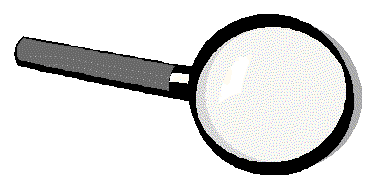 |
SURNAME SEARCH TECHNIQUES by Jeanne Tanghe |
Some of you who are researching surnames that are difficult to spell may find a search technique that I have discovered useful.
I keep an index card clipped to each of my surname files on which I write any spelling variations I find for that surname. I also write the corresponding Soundex code next to the variation. For example, my 'Szudrowicz' index card has 16 ways of spelling that surname that I have found. That’s 15 variants and the correct way. Here’s what I mean:
| SCHRADWLITCH | S634 | SUDROVITCH | S361 |
| SCHROVISH | S612 | SUDROWIC | S362 |
| SCBROVITCH | S613 | SZUDROVECZ | S361 |
| SCHUDROWITZ | S363 | SZUDROVITSCH | S361 |
| SHUBROWS | S162 | SZUDROVITZ | S361 |
| SHUDRORIWITZ | S366 | SZUDROWICH | S362 |
| SHUDROWITZ | S363 | SZUDROWICZ | S362 |
| SUDROVECH | S361 | SZUDROWITZ | S363 |
Notice that these 16 spelling variations produce 8 different Soundex codes!
Whenever I search an index, whether alphabetical or Soundex, I refer to my index card for that surname and I search for all variants as well. Sometimes I will go back to an index I searched a while ago and look for any new variants I have listed. I’ve then found entries I previously missed.
I believe that this technique has helped me to find documents I would have overlooked if I had just searched for the surname the way it is supposed to be spelled.
I hope others find this useful.
Daniel James in Polish Genealogical Society of America Bulletin, Fall 1997.
Return to the Table of Contents.
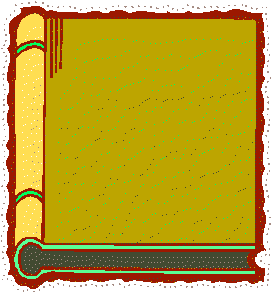 |
LIVERMORE
VALLEY HISTORY |
Editor’s Note: Gary Drummond has long been a student of Livermore Valley History. He is the author and editor of several publications on valley history, including the stories of Mary Ann Harlan Smith, William Mendenhall, and James D. Smith, Headmaster of Livermore College from 1875 to 1893. He is on the Board of Directors of the Livermore Heritage Guild.
The Economy Changes in Livermore Valley The change from a livestock to an agricultural economy in Livermore Valley began early in the mid-1850s. It was in 1856 that Joseph Livermore fenced in and sowed 160 acres of wheat on his farm in the southeastern corner of the valley. It is reported that this was the first field of grain ever raised here.Others noted his success: Samuel and J. West Martin, who had bought the Rancho Santa Rita in 1854 in an administrator's sale (it was said that there were enough cattle included in the sale that, when sold, they provided the purchase money for the land), planted wheat in 1857. Joseph F. Black put in 400 acres also that year. In 1858, not to be outdone, Alexander Esdon, Black's neighbor, planted a thousand acres. Hiram Bailey planted 160 acres of grain on his place at the end of North Livermore Avenue. Richard Threlfell leased property in what was known as the "big field" (where the Valley East subdivision and LLNL are presently located). He started out with 400 acres, and the next year planted 1700 acres of wheat. The character of the valley as a grain-producing district was changing rapidly.
Cattle and sheep raising was coupled with disappointment as well as success. Years of plenty were mixed with years of failure. The year 1855 was dry and much livestock was lost for lack of grass. During the winter of 1861/62, prolonged heavy rains caused the whole west end of Livermore Valley to be covered with water from Arroyo Road to the laguna in Pleasanton. Many head of stock drowned. Snow in the Livermore hills lasted until April. Two years of drought followed. Then, in 1864, it was extremely dry. Many cattle, horses and sheep, not only in Livermore Valley but all over California, died for lack of pasturage. It has been estimated that the state's livestock population dropped by 50% that year. Sheep were moved to less desirable lands, because they could graze in relatively barren environment. By 1865, agriculture had almost completely pushed out animal husbandry as the chief industry in Livermore Valley.
Agricultural expansion didn't slow down. More and more land was put to the plow in 1866 and 1867. Richard Threlfell now had 4,000 acres under cultivation in the "big field." Alexander Esdon planted 600 acres of wheat on the Bernal Grant and, in addition to the land he was farming on the Dougherty property, he was harvesting a total of 2,800 acres. Wheat and barley were big business.
Grain farmers labored under the disadvantage of being so distant from market that hauling was a large expense item. Until the coming of the railroad in 1869, all the grain in the valley was hauled north to Morris Landing on the San Joaquin River or across the hills to Mowry's Landing near San Leandro. With such tremendous amounts being grown here, one can imagine that the unimproved country roads were well-impacted with traffic summer and fall.
(This story to be continued in the next issue of the LAGS Root Tracer.)
Return to the Table of Contents.
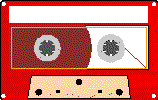 |
by Jerry Reynolds |
The following audio tapes are missing from our collection. We need them back so others can use them. Please check your tapes to see if you have them.
Tape #L2 - Beginning Genealogy
Tape #P4 - Tracing Your Immigrant Ancestors: Clues From Seldom Used Sources
Tape #P6 - Where Haven’t You Looked? Little Known and Neglected Records
If you find any of these tapes, please return them to Jerry Reynolds.
Return to the Table of Contents.
 |
by Mildred Kirkwood |
Did you notice that the Roots Tracer Volume numbers changed in mid-1997? This was done in error and I didn’t notice it until it was pointed out to me recently. Vol. XVI has only No.1 & 2; Vol. XVII has only No. 3 & 4. 1998 will be Vol. XVIII and will have No. 1,2,3,4.
I apologize for any confusion this may have caused.
Return to the Table of Contents.
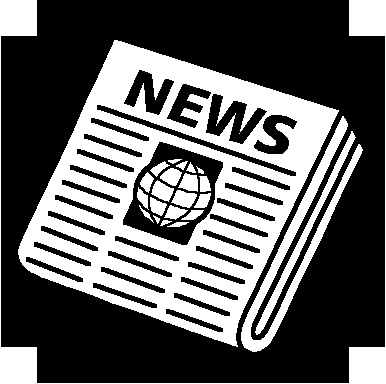 |
CONTRIBUTIONS TO ROOTS TRACER by Mildred Kirkwood |
Month after month, this newsletter is put together with gleanings from publications of our sister societies, items from many sources which have caught the interest of your editors, and occasional contributions from a small, but loyal, group of L-AGS members. Good as this publication is (we are proud of what we produce), it could be very much better if each of you would contribute just one item a year!
WHAT KIND OF ITEM?
Think about what is sitting in your files and what you could share. Then make a copy or write a summary and give it to Mildred Kirkwood or Jolene Abrahams at any meeting or mail it to L-AGS, P.O. Box 901, Livermore, CA 94551-0901. Be sure to include your name, along with the name, date, and volume of any published material.
Just once a year, from each of you. Please.
Return to the Table of Contents
[ Roots Tracer Menu ] [ L-AGS Home Page ]
Last updated 27 Sep 2004 vlr